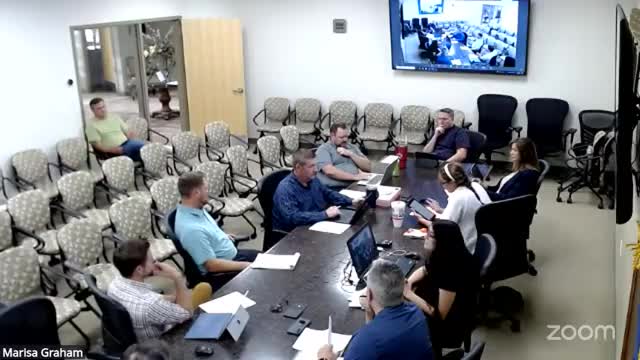Council Discusses Flexibility in Site Plan Modifications and Proposed Fine Limits
September 24, 2025 | Syracuse City Council, Syracuse, Davis County, Utah
This article was created by AI summarizing key points discussed. AI makes mistakes, so for full details and context, please refer to the video of the full meeting. Please report any errors so we can fix them. Report an error »

In the heart of Syracuse's city hall, council members gathered to discuss vital updates to local zoning laws, aiming to strike a balance between maintaining community standards and allowing flexibility for property owners. The atmosphere was charged with a sense of purpose as officials explored ways to simplify the approval process for site plan modifications.
One of the key proposals discussed was the idea of allowing property owners to make changes to their landscapes without the need for a lengthy amendment process, as long as the alterations remained compliant with existing zoning laws. This shift could ease the burden on residents who often feel constrained by rigid regulations. "Just say it has to be a compliant landscape to our zoning laws," one council member suggested, highlighting the need for a more straightforward approach.
The conversation also touched on the importance of maintaining architectural integrity within the community. Concerns were raised about buildings with drooping eaves and other maintenance issues that could pose safety hazards. Council members agreed that while safety is paramount, there should be room for property owners to develop a maintenance plan that addresses these concerns without immediate penalties. "We do expect things to be maintained," one member emphasized, advocating for a structured timeline for repairs.
As discussions progressed, the council also considered the framework for fines related to non-compliance. A proposal to cap fines at $2,000 was met with approval, allowing for a more efficient process without overwhelming the council with minor infractions. "You can't have everything come to us for approval," one member noted, recognizing the need for practicality in governance.
The meeting concluded with a commitment to refine the proposed language and bring it back for a vote, ensuring that the community's needs are met while fostering a collaborative spirit among residents and city officials. As Syracuse continues to grow, these discussions reflect a broader commitment to balancing development with the preservation of community character, paving the way for a more adaptable and responsive local government.
One of the key proposals discussed was the idea of allowing property owners to make changes to their landscapes without the need for a lengthy amendment process, as long as the alterations remained compliant with existing zoning laws. This shift could ease the burden on residents who often feel constrained by rigid regulations. "Just say it has to be a compliant landscape to our zoning laws," one council member suggested, highlighting the need for a more straightforward approach.
The conversation also touched on the importance of maintaining architectural integrity within the community. Concerns were raised about buildings with drooping eaves and other maintenance issues that could pose safety hazards. Council members agreed that while safety is paramount, there should be room for property owners to develop a maintenance plan that addresses these concerns without immediate penalties. "We do expect things to be maintained," one member emphasized, advocating for a structured timeline for repairs.
As discussions progressed, the council also considered the framework for fines related to non-compliance. A proposal to cap fines at $2,000 was met with approval, allowing for a more efficient process without overwhelming the council with minor infractions. "You can't have everything come to us for approval," one member noted, recognizing the need for practicality in governance.
The meeting concluded with a commitment to refine the proposed language and bring it back for a vote, ensuring that the community's needs are met while fostering a collaborative spirit among residents and city officials. As Syracuse continues to grow, these discussions reflect a broader commitment to balancing development with the preservation of community character, paving the way for a more adaptable and responsive local government.
View full meeting
This article is based on a recent meeting—watch the full video and explore the complete transcript for deeper insights into the discussion.
View full meeting

